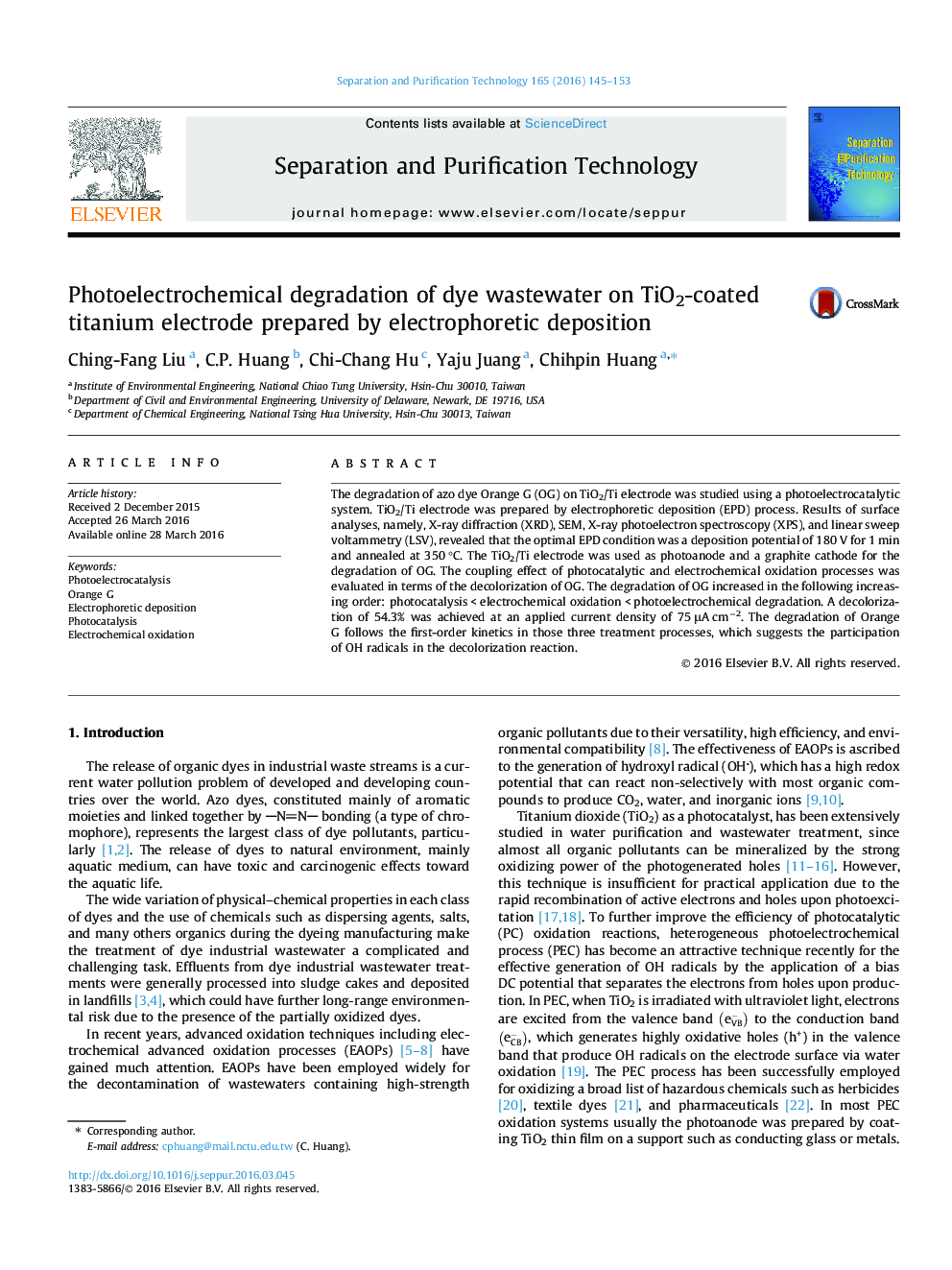| Article ID | Journal | Published Year | Pages | File Type |
|---|---|---|---|---|
| 639977 | Separation and Purification Technology | 2016 | 9 Pages |
•Photoelectrochemical degradation was effective in the treatment of dye wastewater.•TiO2/Ti electrode was prepared by electrophoretic deposition.•The photocatalytic and electrochemical reaction are synergistic in the degradation of OG.•Graphite cathode can generate H2O2 to improve the PEC performance.•Degradation of OG was attacked by OH in the solution phase.
The degradation of azo dye Orange G (OG) on TiO2/Ti electrode was studied using a photoelectrocatalytic system. TiO2/Ti electrode was prepared by electrophoretic deposition (EPD) process. Results of surface analyses, namely, X-ray diffraction (XRD), SEM, X-ray photoelectron spectroscopy (XPS), and linear sweep voltammetry (LSV), revealed that the optimal EPD condition was a deposition potential of 180 V for 1 min and annealed at 350 °C. The TiO2/Ti electrode was used as photoanode and a graphite cathode for the degradation of OG. The coupling effect of photocatalytic and electrochemical oxidation processes was evaluated in terms of the decolorization of OG. The degradation of OG increased in the following increasing order: photocatalysis < electrochemical oxidation < photoelectrochemical degradation. A decolorization of 54.3% was achieved at an applied current density of 75 μA cm−2. The degradation of Orange G follows the first-order kinetics in those three treatment processes, which suggests the participation of OH radicals in the decolorization reaction.
Graphical abstractFigure optionsDownload full-size imageDownload as PowerPoint slide
